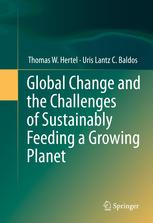Global Change and the Challenges of Sustainably Feeding a Growing Planet
About
Analysis and modeling of geospatial datasets can be a daunting task due to the volume of data stored in many different file formats, especially without having much experience with programming.
This online resource contains materials designed to teach people with limited programming experience how to manipulate various geospatial data to make them more accessible and usable. Additionally, various interactive modeling and analysis tools will be used to supplement and visualize the data.
Each module contains background information about some commonly used geospatial data formats to first establish a basic understanding of the data type and its uses. Basic python examples are included to demonstrate some frequently used data manipulation and extraction commands. Python jupyter notebooks along with demonstration files will be provided as a tutorial to develop a stronger foundation for geospatial data analysis. The notebooks provided are in no way a tool to satisfy all geospatial data visualization but are intended to be a block other people can build upon.
Modules
-
Overview of Global Land Use, Food Security and the Environment
Module 1 •
-
Population and Income as Drivers of Global Change
Module 2 •
-
Productivity Growth and Yields in the Global Crops Sector
Module 3 •
-
Economic Responses to Scarcity
Module 4 •
-
Water, Food and Environmental Security
Module 5 •
-
Climate Change Impacts in Agriculture
Module 6 •
-
Land-Based Environmental Services
Module 7 •
-
Biofuels as a Driver of Long Run Land Use Change
Module 8 •
-
Livestock and Processed Foods
Module 9 •
-
Food Security and Nutrition
Module 10 •
-
Global Change and the Food System in 2050
Module 11 •
Instructor


Discussions
Please login to view discussions.










